What historical events shaped Valparaíso?
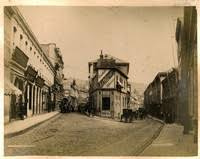
What historical events shaped Valparaíso?
What historical events shaped Valparaíso? Historical Events That Shaped Valparaíso: A Journey Through Time.
Valparaíso, a picturesque port city in Chile, boasts a rich history that has been shaped by a myriad of significant events over the centuries.
As a bustling hub of trade and culture, the city’s development has been influenced by its geographical location, economic opportunities, and social movements.
This guide explores the key historical events that have played a crucial role in shaping Valparaíso into the vibrant city it is today, providing insight into its past and present.
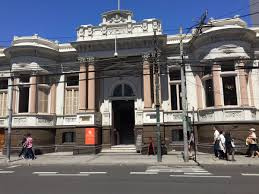
Indigenous Inhabitance
Long before European arrival, the Valparaíso region was inhabited by indigenous peoples, primarily the Mapuche. These communities thrived in the area, utilizing the natural resources and fertile land for agriculture and trade.
The Mapuche developed a rich culture with unique traditions and social structures, laying the groundwork for the region’s early history.
Their relationship with the land and the sea influenced the customs and practices that continue to resonate in the region today.
Understanding the indigenous heritage is essential to grasping Valparaíso’s historical context, as it highlights the rich cultural tapestry that would later be shaped by European colonization.
Spanish Colonization in the 16th Century
The arrival of Spanish conquistadors in the 16th century marked a pivotal turning point for Valparaíso.
In 1536, the Spanish explorer Diego de Almagro arrived in the region, followed by Pedro de Valdivia, who established Spanish settlements throughout Chile.
Valparaíso was officially founded in 1544 by the Spanish as a port for ships involved in the lucrative trade routes. Its strategic coastal location allowed it to serve as a crucial point for the export of goods, leading to increased European interest in the region.
The establishment of Valparaíso as a Spanish port laid the foundation for its economic growth and set the stage for future developments in the city.
The 19th Century: A Flourishing Port
The 19th century was a transformative period for Valparaíso, as the city emerged as one of the most significant ports in the Pacific.
The California Gold Rush in the mid-1800s led to a surge in trade, attracting ships from around the world seeking to supply goods to miners.
During this time, Valparaíso became a bustling cosmopolitan city, welcoming immigrants from Europe and Asia. The influx of diverse cultures enriched the city’s social fabric, influencing its architecture, cuisine, and customs.
As Valparaíso’s economy flourished, it became known as the “Jewel of the Pacific,” boasting a thriving commercial sector and a vibrant cultural scene that attracted artists and intellectuals.
The War of the Pacific (1879-1884)
The War of the Pacific was a critical conflict that greatly impacted Valparaíso and its role in Chilean history.
This war was fought between Chile and a coalition of Peru and Bolivia over territorial disputes, particularly concerning valuable mineral resources.
During the war, Valparaíso served as a key military and logistical base for the Chilean forces. The port city’s strategic importance was evident, as it facilitated the transportation of troops and supplies.
The conclusion of the war solidified Chile’s dominance in the region, resulting in territorial gains for the country. Valparaíso continued to thrive as a commercial center, further enhancing its reputation as a vital port city.
The 20th Century: Industrialization and Decline
As the 20th century progressed, Valparaíso experienced both growth and decline. The city underwent industrialization, with the establishment of factories, shipyards, and a growing workforce.
However, the global economic crisis of the 1930s led to significant challenges for Valparaíso, resulting in decreased trade and shipping activity.
The construction of new ports in nearby regions further contributed to the city’s decline as a commercial hub.
Despite these challenges, Valparaíso maintained its cultural significance, becoming a center for the arts and intellectual movements.
The city remained a source of inspiration for writers, painters, and musicians who were drawn to its unique character.
UNESCO World Heritage Status (2003)
In 2003, Valparaíso was designated a UNESCO World Heritage Site, recognizing its historical and cultural significance.
This designation highlighted the city’s exceptional architecture, vibrant neighborhoods, and unique cultural landscape.
The recognition prompted efforts to preserve and restore Valparaíso’s architectural heritage, ensuring that future generations would appreciate its historical value.
This status has also increased tourism, bringing renewed interest in the city and its rich history.
Valparaíso’s designation as a UNESCO World Heritage Site serves as a reminder of the importance of safeguarding cultural heritage while embracing modern development.
Recent Developments and Cultural Resurgence
In recent years, Valparaíso has experienced a cultural renaissance, driven by local artists, entrepreneurs, and community organizations.
The city has become a hub for creativity, innovation, and social movements advocating for cultural preservation and community engagement.
Art galleries, street art, and cultural festivals have emerged, showcasing the talents of local artists and fostering a sense of pride among residents.
This resurgence has attracted tourists seeking to experience the city’s unique artistic identity and vibrant culture.
Valparaíso’s recent developments underscore its resilience and ability to adapt to changing times while preserving its rich heritage.
Valparaíso’s history
Valparaíso’s history is a captivating narrative woven with diverse influences, from indigenous cultures to Spanish colonization, economic booms, and cultural renaissance.
The significant events that have shaped the city highlight its resilience and adaptability, making it a unique destination with a rich tapestry of experiences.
As you explore Valparaíso, take the time to appreciate its historical significance, architectural beauty, and vibrant culture.
Understanding the events that have shaped this enchanting city allows for a deeper appreciation of its character and the experiences it offers.
Valparaíso is not just a picturesque port city; it is a living testament to the interplay of history, culture, and community.
By delving into its past, you can enrich your visit and gain a greater understanding of the vibrant spirit that defines Valparaíso today.
Embrace the journey through time as you discover the captivating stories that continue to shape this remarkable coastal gem!


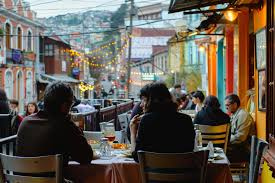
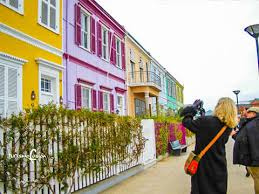
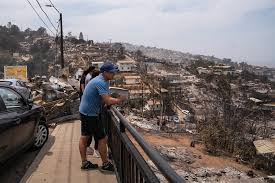
Leave a Reply